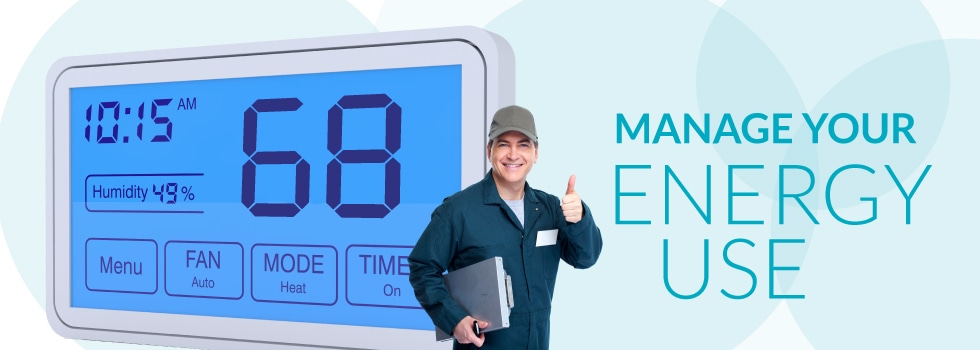
Seasonal cold weather is on the horizon. Taking the time to button up your home now will help you consume less natural gas when temperatures drop — a move that can help you avoid a higher-than-expected gas bill.
“Making even small improvements can impact your energy bill.”
“Though natural gas is one of the most efficient methods of heating your home, making even small improvements can impact your energy bill,” advises Kim Jones, a Walton Gas customer service representative.
A little effort can yield some big results when it comes to saving energy. Below are steps you can take this month to help you better manage your energy use when the cold winds start to blow.
8 things you can do now
- Schedule a furnace inspection. If you haven’t yet done it, contact your HVAC provider to schedule a routine checkup of your heating system. Regular maintenance helps your system operate at peak performance. Replacing leaky or worn-out parts keeps your system from losing energy and running up your gas bill. Tip: Don’t forget the filters. Regularly cleaning or replacing the air filter also influences energy efficiency. Choose the right air filter
- Seek the leaks. Heat lost through leaky windows accounts for 10 to 25 percent of your overall heating bill, according to energy.gov. Seal leaks around doors with weatherstripping. Use caulk to fill leaks around non-moving parts, such as between a window frame and wall. Spray foam can be used to reduce air leaks around utility cutouts for pipes under the sink. And make sure electrical outlets and wall plates on your outside walls are properly insulated.
- Make an attic stairway box. If warm air is escaping around an attic access door, take a few minutes to make and install an attic stairway box for added insulation. Watch this short DIY tutorial from Walton EMC to make a box for around $25.
- Look for leaky ducts. The adhesive on tape that seals joints between air duct sections can dry out, allowing heated air to escape. Finding and fixing these leaks can cut your heating bill by 3 to 10 percent. Inspect your ductwork in attics, basements and crawl spaces while the heating system is on, looking for telltale signs of air movement at junctions that indicate an air leak. Learn how to patch a leak
- Insulate the water heater. If your water heater is more than 10 years old, it may be lined with fiberglass insulation, which is less effective at preventing heat loss than the foam used in newer models. Wrapping the tank in an insulating blanket alone can reduce annual water heating costs by up to 9 percent. You can save even more by setting the water heater temperature to 120 degrees Fahrenheit.
- Install a programmable thermostat. The easiest way to keep your home’s temperature at energy-efficient levels is by replacing your manual thermostat with a programmable one. This relatively low-cost upgrade will automatically turn heat up and down, according to your personal occupancy and sleeping schedules. Invest a bit more for a smart thermostat, and you can adjust your home’s temperature from your smartphone. How to install a programmable thermostat
- Convert your fireplace. As much as 80 percent of the heat your fireplace generates could be going straight up the chimney, if you have a wood-burning or older natural gas fireplace. If you enjoy time around the fireplace, consider converting to an energy-efficient gas-fired model.
Walton Gas urges you to take measures now, before it’s time to turn on the heat, so you won’t receive a shock when wintertime gas bills arrive.
